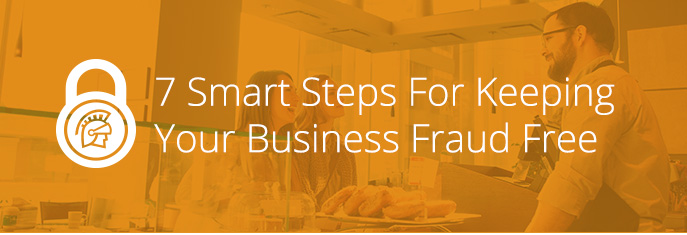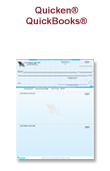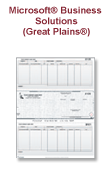Quarter 1, 2015

A recent survey by the Association for Certified Fraud Examiners (ACFE) provides some startling perspectives on the costs of fraud to today's businesses:
- When you order new checks, choose "signature required" upon receipt to make it harder for anyone who tries to intercept them before they arrive.
- Nearly a quarter of all fraud incidents cost the affected company more than $1 million.
- Respondents estimated that a typical business loses 5% of its revenue to fraud each year.
But the ACFE offers good news, too. Proactive, preventive security measures can dramatically reduce the cost of a fraud incident because they help a company detect the crime sooner. Fraud detected through surveillance and monitoring costs around $49,000, while instances discovered by law enforcement can cost a business in excess of $1 million.
While no prevention system can ever be fail-safe, the following steps can effectively help reduce your risk of fraud:
- Be vigilant about payment security Whether you're receiving payments or making them, payment security is paramount. For Internet sales, use address and card verification measures. Fully encrypt all points of payment to reduce the risk of hacking. When making payments, choose methods that have proven security protections in place, such as secure ePayment providers and high-security checks.
- Monitor your business credit report Credit accounts are often the first place where signs of fraud will appear. Just as you monitor your personal credit, it's imperative to regularly monitor your business credit report for those telltale signs.
- Be careful during the hiring process Sadly, fraud often stems from internal sources. Thoroughly vet new employees, conducting full background checks on anyone who will have access to company funds, customer data or other proprietary information.
- Train employees in fraud recognition/prevention Educate employees who work with data, credit and cash about the signs of fraud and the steps they can take to protect your company. For example, train them to recognize how a credit card device might have been tampered with and stress the importance of shredding documents before disposal.
- Adopt and enforce cyber security measures In addition to keeping up-to-date anti-virus and anti-malware software on your company systems, implement and enforce a strict password policy. Establish clear guidelines for those who access company systems and implement a sensible policy for employees who want to use personal devices to interact with company systems.
- Manage cash and credit Keep a close eye on the movement of cash and credit within your business. Implement a checks & balances system, i.e. have one person sign checks while a second person balances the company checkbook rather than having one person do both. Require approval for expenses and consider using security cameras to monitor inventory storage, credit-processing machines and cash registers.
- Be prepared for the worst — consider resolution service Despite your best efforts, fraud may still occur. If it does, having resolution assistance can help your business mitigate financial damages and recover more quickly. Consider enrolling in a fraud-resolution service, such as EZShield® Business ID Restoration. EZShield offers round-the-clock access to resolution specialists, a virtual wallet for online storage of all business information, advanced security for business information and an easy-to-use account dashboard that provides a snapshot of your account status, along with helpful tips.
Answer These 4 Questions for a Better Understanding of Your Brand

Branding isn't just for big businesses. Every company, from Nike to Nick's Plumbing needs to understand its brand and what it means to existing and potential customers.
Figuring out your own brand and how well you represent it may be a bit tricky, but it's a worthwhile exercise. The following four questions can help you determine if you truly understand your brand and the impact that day-to-day behaviors can have on it.
1. Do you have brand standards?
Simple things, including font and color consistency across all communications can go a long way toward establishing your brand. Here's an exaggerated example: If you were an investment advisor responsible for taking care of your client's financial future, would you want this to be your brand font?

If you, as a potential customer, saw this, would it inspire you to trust the company with your retirement fund? Of course not.
On the flip side, if you're trying to brand yourself as the low-cost alternative to your competition, using fancy letterhead or a prestigious-looking font can actually work against you:

2. How do you address customers or clients?
A very formal brand always refers to clients by their last name with an appropriate salutation, such as "Dear Mr. Smith" or "Dear John Smith." A moderately informal brand will often refer to clients by their last name, unless directed otherwise by the customer: "Hello, Mr. Smith" or "Hello, John." An informal brand will usually refer to clients by their first name: "Hi, John."
Beyond that, there are subtle but important differences in how you greet and refer to your customers in correspondence.
As a greeting, do you use "Hi"? "Hello"? "Hey"? "Dear"? "Attention"? Each of these conveys something slightly different. If you want your business to be perceived as fun, friendly and carefree, you might use "Hi" or "Hey." However, most businesses would fall safely into the "Hello" camp. More formal relationships would use "Dear" or "Attention" as it conveys a less-than-personal connection.
And what do you call the people who buy from you? Do you refer to them as customers? Clients? Patrons? A simple word change can impact the formality of the relationship. Consider how "one of our premier clients" has a completely different feel to it than "one of our favorite customers." Which is more appropriate for you and your company?
3. Can you pick a pen?
If presented with a collection of different promotional pens, could you choose the one (based on size, color, weight, quality, etc.) that best represents your company? You may be surprised to know that most business people find that very difficult to do. And when they do choose, more often than not, they pick the wrong pen. But if you truly know your brand, it's an easy, instinctive choice.
If your company relies on trust, you wouldn't pick a fun, funky or cheap pen.
If your company appeals to people's playful side, you wouldn't pick the most basic, corporate pen available.
If your company is known for getting things done right, you'd keep it simple but temper it with high quality.
To practice this approach, you can also look at everyday items, including furniture, artwork, even coffee cups, and ask yourself, "If I had a waiting room, would I want this to be what potential customers see?" As you get better at answering that question, you'll get better at instinctively knowing your brand.
4. Do you live your brand every day?
Maintaining a professional image is important if you want to portray a professional brand. This applies to any aspect of your business that your customer will encounter. Your stationery, your storefront, your logo, your vehicle, your employees — everyone and everything that connects you with your customers needs to match the image you're trying to convey.
Here's another good brand identity exercise: Spend three days paying attention to everything that customers can and will see during your interactions with them. Then play a game of "which of these things is not like the others" to identify the points of contact that don't fully support the image you're trying to create.
With practice, you can become your own brand champion. You probably already know most of what makes up your brand. Just give yourself time to think about it and then get used to living it every day.
The overall benefit of having a strong brand is that your customers and potential customers will know what to think of you and, more important, when to think of you, i.e. at the time buying decisions are made.


